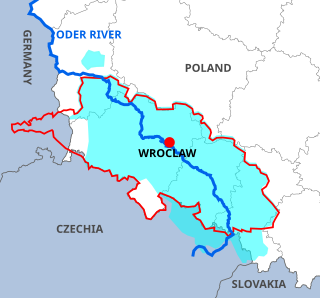
Silesia is a historical region of Central Europe mostly in Poland, with small parts in the Czech Republic and Germany. Its area is approximately 40,000 km2 (15,400 sq mi), and the population is estimated at around 8,000,000 inhabitants. Silesia is split into two main sub-regions of Lower Silesia in the west and Upper Silesia in the east. Silesia has a diverse culture, including architecture, costumes, cuisine, traditions, and the Silesian language.
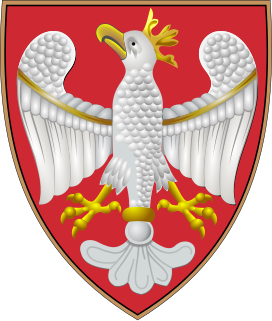
The Piast dynasty was the first historical ruling dynasty of Poland. The first documented Polish monarch was Duke Mieszko I. The Piasts' royal rule in Poland ended in 1370 with the death of king Casimir III the Great.

Zabrze is an industrial city in Silesia in southern Poland, near Katowice. The west district of the Silesian Metropolis, a metropolis with a population of around 2 million. It is in the Silesian Highlands, on the Bytomka River, a tributary of the Oder.

Gliwice(listen) is a city in Upper Silesia, in southern Poland. The city is located in the Silesian Highlands, on the Kłodnica river. It lies approximately 25 km west from Katowice, regional capital of the Silesian Voivodeship.

Bytom is a city with powiat rights in southern Poland, in Silesia, in centre of Metropolitan Association of Upper Silesia and Dąbrowa Basin.

Chorzów(listen) is a city in Silesia in southern Poland, near Katowice. Chorzów is one of the central cities of the Upper Silesian Metropolitan Union – a metropolis with a population of 2 million. It is located in the Silesian Highlands, on the Rawa River.

Upper Silesia is the southeastern part of the historical and geographical region of Silesia, located mostly in Poland, with small parts in the Czech Republic.

Kędzierzyn-Koźle(listen) is a town in southwestern Poland, the administrative centre of Kędzierzyn-Koźle County in Opole Voivodeship.
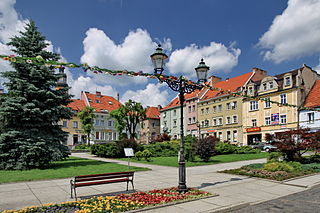
Wodzisław Śląski is a town in Silesian Voivodeship, southern Poland with 47,992 inhabitants (2019). It is the seat of Wodzisław County.

Cieszyn Silesia, Těšín Silesia or Teschen Silesia is a historical region in south-eastern Silesia, centered on the towns of Cieszyn and Český Těšín and bisected by the Olza River. Since 1920 it has been divided between Poland and Czechoslovakia, and later the Czech Republic. It covers an area of about 2,280 square kilometres (880 sq mi) and has about 810,000 inhabitants, of which 1,002 square kilometres (387 sq mi) (44%) is in Poland, while 1,280 square kilometres (494 sq mi) (56%) is in the Czech Republic.

In the second half of the 2nd millennium B.C., Silesia belonged to the Lusatian culture. About 500 BC Scyths arrived, and later Celts in the South and Southwest. During the 1st century BC Silingi and other Germanic people settled in Silesia. For this period we have written reports of antique authors who included the area. Slavs arrived in this territory around the 6th century. The first known states in Silesia were those of Greater Moravia and Bohemia. In the 10th century, Mieszko I incorporated Silesia into Civitas Schinesghe, a Polish state. It remained part of Poland until the Fragmentation of Poland. Afterwards it was divided between Piast dukes, descendants of Władysław II the Exile, High Duke of Poland.
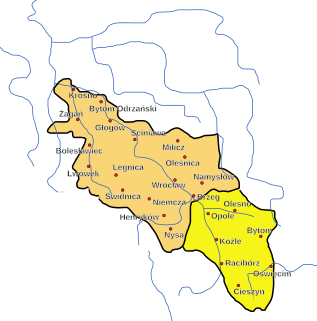
Lower Silesia is the northwestern part of the historical and geographical region of Silesia; Upper Silesia is to the southeast.

Henry the Bearded ; c. 1165/70 – 19 March 1238), of the Silesian line of the Piast dynasty, was Duke of Silesia at Wrocław from 1201 and Duke of Kraków and thus High Duke of all Poland – internally divided – from 1232 until his death.

Doubrava (help·info) is a village in Karviná District, Moravian-Silesian Region, Czech Republic. It has a population of 1,507 (2006) and lies in the historical region of Cieszyn Silesia.

Cisownica is a village in Gmina Goleszów, Cieszyn County, Silesian Voivodeship, southern Poland, close to the border with the Czech Republic. In 2008 it had a population of 1,705. It lies in the historical region of Cieszyn Silesia on the slopes of Mała Czantoria mountain.
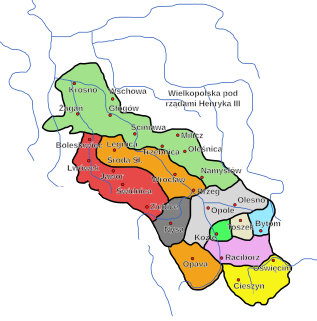
The Duchy of Oświęcim, or the Duchy of Auschwitz, was one of many Duchies of Silesia, formed in the aftermath of the fragmentation of Poland.

Dolní Suchá (help·info) is a village in Karviná District, Moravian-Silesian Region, Czech Republic. It was a separate municipality but became administratively a part of Havířov in 1960. It has a population of 673 (2010). Village lies in the historical region of Cieszyn Silesia.
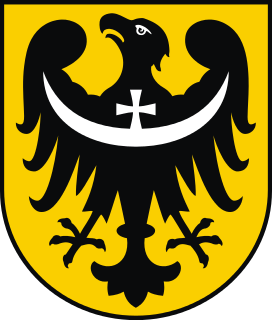
The Silesian Piasts were the elder of four lines of the Polish Piast dynasty beginning with Władysław II the Exile (1105–1159), eldest son of Duke Bolesław III of Poland. By Bolesław's testament, Władysław was granted Silesia as his hereditary province and also the Lesser Polish Seniorate Province at Kraków according to the principle of agnatic seniority.

Jan II of Opole was a Duke of Opole-Brzeg -Strzelce-Niemodlin in 1476, ruler over Gliwice, Toszek, Niemodlin, Bytom, Koźle, and Racibórz. He belonged to the Silesian branch of the Polish Piast dynasty which was the oldest branch of the first Polish royal dynasty.

The Duchy of Opole and Racibórz was one of the numerous Duchies of Silesia ruled by the Silesian branch of the royal Polish Piast dynasty. It was formed in 1202 from the union of the Upper Silesian duchies of Opole and the Racibórz, in a rare exception to the continuing feudal fragmentation of the original Duchy of Silesia.


















